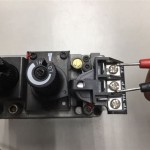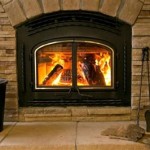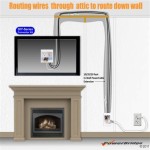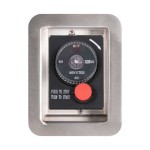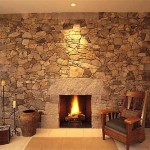Gas Logs For Fireplace Installation: A Comprehensive Guide
Gas logs present a compelling alternative to traditional wood-burning fireplaces, offering enhanced convenience and reduced maintenance requirements. This article provides a thorough examination of gas log fireplace installation, covering essential considerations, preparation steps, installation procedures, and safety precautions. Understanding these aspects is crucial for homeowners seeking to upgrade their fireplace experience and ensure a safe and efficient heating solution.
The decision to install gas logs involves careful evaluation. While offering benefits such as ease of use and reduced emissions compared to wood-burning fireplaces, gas logs also require professional installation and adherence to safety regulations. Furthermore, understanding the different types of gas logs available – vented and vent-free – is paramount in selecting the appropriate system for a specific fireplace and living space.
Understanding Vented and Vent-Free Gas Logs
The primary differentiation between gas log systems lies in their venting requirements. Vented gas logs necessitate a fully functional chimney, similar to a traditional wood-burning fireplace. These logs produce realistic flames and significant heat, but a substantial portion of the heat escapes up the chimney. They also generate carbon monoxide and other combustion byproducts that must be properly vented to the outside.
Vent-free gas logs, conversely, do not require a chimney or existing vent. They are designed to burn more cleanly and efficiently, releasing minimal combustion byproducts into the room. Because they retain a greater percentage of the heat produced, vent-free logs can be more effective for supplemental heating. However, they must be equipped with oxygen depletion sensors (ODS) that automatically shut off the gas supply if oxygen levels in the room become dangerously low. Vent-free systems are regulated by strict safety standards and must be installed and operated according to manufacturer instructions.
The choice between vented and vent-free gas logs depends on several factors, including existing fireplace infrastructure, heating needs, and personal preferences. Homes with functional chimneys might opt for vented logs to achieve a more authentic fireplace ambiance. However, those without existing chimneys or prioritizing heating efficiency might prefer vent-free systems. Regardless of the choice, adherence to safety guidelines and professional installation are essential.
Local building codes and regulations may also influence the selection process. Some jurisdictions restrict or prohibit the installation of vent-free gas logs due to concerns about indoor air quality. Homeowners should consult with local authorities and qualified HVAC professionals to ensure compliance with all applicable regulations before proceeding with the installation.
Preparing for Gas Log Installation
Proper preparation is critical to a successful and safe gas log installation. This process involves several key steps, including inspecting the existing fireplace, selecting the appropriate gas log set, and ensuring all necessary materials and tools are readily available.
The first step is a thorough inspection of the existing fireplace and chimney. This inspection should identify any structural damage, such as cracks or crumbling brickwork, which must be repaired before proceeding with the installation. The chimney should be professionally cleaned to remove any creosote buildup or other obstructions that could impede proper ventilation, especially for vented gas logs.
Selecting the appropriate size and type of gas log set is equally important. The size of the gas logs should be compatible with the dimensions of the fireplace firebox. Overly large logs can obstruct airflow and potentially create a safety hazard. The BTU (British Thermal Unit) rating of the gas logs should also be appropriate for the size of the room to be heated. Choosing an excessively high BTU rating could lead to overheating and discomfort.
Before commencing the installation, gather all necessary materials and tools, including the gas log set, gas connector kit, pipe sealant or Teflon tape approved for gas lines, a pipe wrench, a level, a screwdriver, and a carbon monoxide detector. Ensure the gas supply to the fireplace is completely shut off before beginning any work on the gas line. It is also advisable to have a qualified HVAC professional inspect the gas line and connections to ensure they are in good condition and meet all safety requirements.
Furthermore, review the manufacturer's instructions carefully before starting the installation. Different gas log sets may have specific installation requirements and procedures. Following the manufacturer's instructions is crucial for ensuring proper performance and safety.
The Gas Log Installation Process
The gas log installation process typically involves several key steps, including connecting the gas line, positioning the gas logs, and testing the system for leaks. Safety precautions should be observed strictly throughout the entire process.
The first step is connecting the gas line to the gas valve on the fireplace. This should be done by a qualified technician to avoid gas leaks. Use a gas connector kit that is specifically designed for connecting gas appliances. Apply pipe sealant or Teflon tape to the threads of the gas fittings to ensure a tight seal. Tighten the connections securely with a pipe wrench, being careful not to overtighten and damage the fittings. After the gas line is connected, test for leaks using a soap and water solution. If bubbles appear, tighten the connections further or replace the fittings if necessary.
After the gas line is properly connected, position the gas logs according to the manufacturer's instructions. The logs should be arranged in a manner that allows for proper airflow and prevents any obstruction of the gas burner. Ensure the logs are stable and will not shift or fall during operation. Incorrect positioning of the logs can lead to incomplete combustion, carbon monoxide buildup, and other safety hazards.
Following log placement, perform a leak test by applying a non-corrosive leak detection solution to all gas connections. If bubbles appear, indicating a leak, immediately shut off the gas supply and tighten the connections. Repeat the leak test until no leaks are detected. Once the system is leak-free, turn on the gas supply and ignite the pilot light, if applicable. Observe the flame pattern to ensure it is burning properly. The flames should be blue with occasional yellow tips and should not be excessively smoky or sooty. Irregular flame patterns or excessive smoke may indicate a problem with the gas supply, burner, or venting system.
Finally, install a carbon monoxide detector in the vicinity of the fireplace. Carbon monoxide is a colorless, odorless, and potentially deadly gas that can be produced by incomplete combustion. A carbon monoxide detector will provide an early warning in the event of a leak. Regularly test the carbon monoxide detector to ensure it is functioning properly.
For vent-free systems, confirming the functionality of the Oxygen Depletion Sensor (ODS) is paramount. This sensor shuts off the gas supply if room oxygen levels drop to unsafe levels. The manufacturer usually provides testing instructions; carefully follow these to guarantee proper operation.
Homeowners should also be aware of the potential for condensation when using vent-free gas logs. Moisture can accumulate on windows and other surfaces due to the humidity produced by the combustion process. Adequate ventilation can help to mitigate this issue. Opening a window slightly or using a dehumidifier can help to reduce condensation levels.
Safety Precautions and Maintenance
Safety is paramount during and after the installation of gas logs. Several measures must be in place to ensure safe operation and prevent hazards.
Regular maintenance is essential for ensuring the safe and efficient operation of gas logs. The gas logs and burner assembly should be cleaned periodically to remove any dust, debris, or carbon buildup that could impede airflow or affect combustion. The chimney should also be inspected and cleaned regularly, especially for vented gas logs, to prevent creosote buildup and ensure proper ventilation. A qualified chimney sweep can perform this task safely and effectively.
Never use flammable liquids, such as gasoline or kerosene, to clean or start the gas logs. These liquids can create a fire hazard or explosion. Use only manufacturer-recommended cleaning products and procedures.
Always ensure the area around the fireplace is clear of flammable materials, such as curtains, furniture, and newspapers. These materials can ignite if they come into contact with the flames or hot surfaces of the fireplace. Maintain a safe distance between the fireplace and any flammable objects.
Never leave a gas log fireplace unattended, especially when children or pets are present. Keep a close watch on the fireplace while it is in operation and never allow children or pets to play near it. A fireplace screen can help to prevent accidental contact with the flames.
If you smell gas, immediately shut off the gas supply to the fireplace and evacuate the premises. Contact your local gas company or fire department immediately to report the leak. Do not attempt to locate or repair the leak yourself. Gas leaks can be extremely dangerous and should only be handled by qualified professionals.
Homeowners must also understand the specific safety features of their gas log system. This includes knowing how to operate the ODS on vent-free logs and what to do if the sensor trips. Additionally, understanding the proper procedure for lighting the pilot light and shutting down the system is crucial.
Finally, regularly inspect any gas lines and connections for signs of damage or wear. Promptly address any issues found by a qualified professional. Ignoring maintenance can lead to hazardous situations. By adhering to safety precautions and performing regular maintenance, homeowners can enjoy the warmth and ambiance of gas logs safely and efficiently.

How To Select And Install A Gas Fireplace Log Set Fireplaces Direct Learning Center

Vented Gas Logs Heater Or Decorative Bart Fireside

How To Select And Install A Gas Fireplace Log Set Fireplaces Direct Learning Center

Gas Log Set S Installation Vented Logs For Your Fireplace

The Best Gas Log Sets For 2024 Fireplaces Direct Learning Center

How Long Do Gas Logs Last To Replace Fireplace

The Many Benefits Of Installing A Gas Log Set In Your Fireplace

Napoleon Gl18e Vented Gas Log Set 18 Inch

Can I Install Gas Logs In My Existing Fireplace Thomas Bros Propane

Gas Log Sets Fireplace Installation Vented Vent Free
Related Posts


